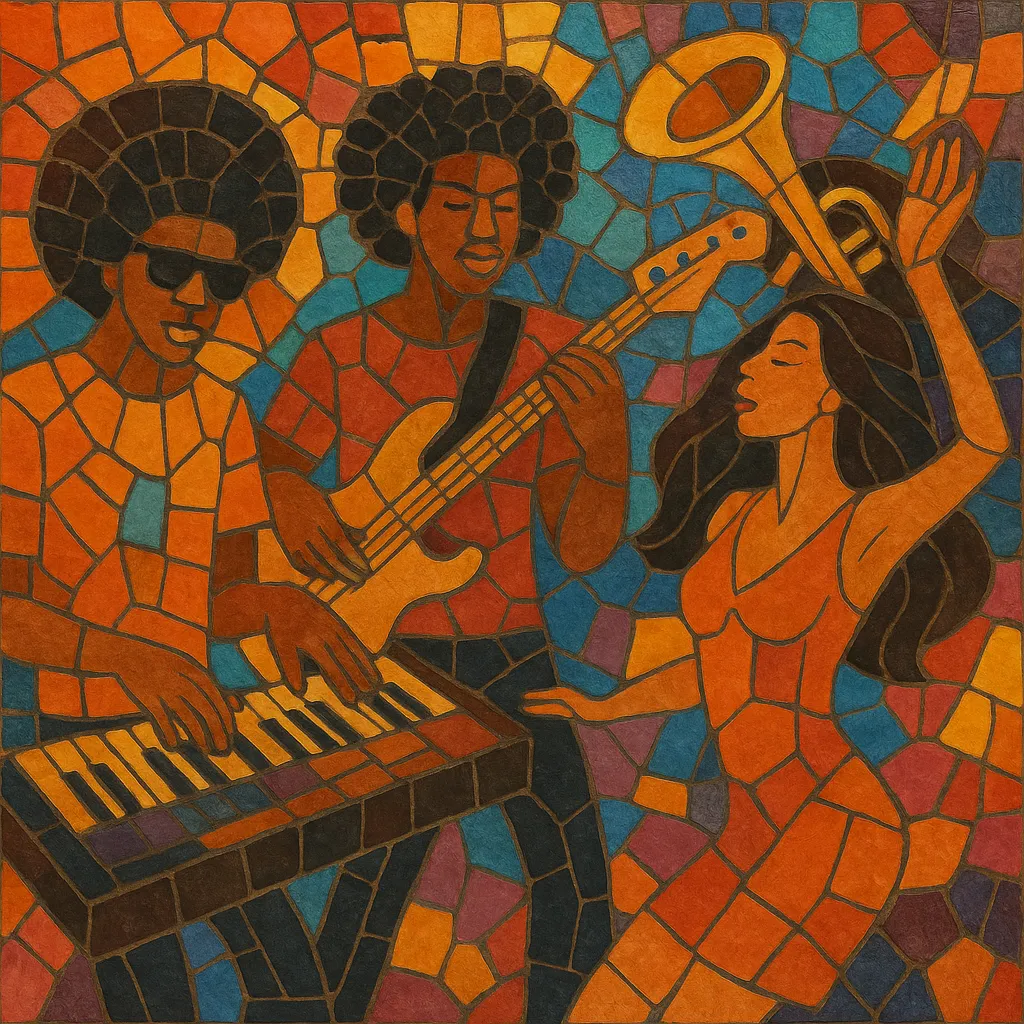Funk pop blends the rhythmic bite and syncopated basslines of funk with the concise song structures, big hooks, and radio-friendly polish of pop.
It typically features tight, danceable grooves; slap or melodic electric bass; crisp, often quantized drums; percussive rhythm guitar; and bright synthesizers or synth-brass accents. Harmonically, funk pop leans on extended chords (7ths, 9ths) and catchy toplines, while arrangements emphasize memorable choruses and clean, accessible production.
The result is a feel-good, dance-primed sound that retains funk’s groove-forward DNA but packages it for mainstream pop audiences.
Funk pop emerged as the mainstream-friendly convergence of 1970s funk and disco’s dancefloor sensibility with pop songwriting. As disco waned, artists and producers carried forward its steady four-on-the-floor precision and funk’s syncopation, merging them with concise hooks and verse-chorus forms fit for radio. Early crossover moments by funk, soul, and disco acts pointed the way to a pop-facing, groove-driven sound.
The 1980s cemented funk pop as a radio and MTV force. Artists like Prince and Michael Jackson showcased propulsive basslines, percussive guitars, and neon-bright synths within tight pop structures, helping define the decade’s sonic identity. Production became sleeker and more electronic, while the visual culture of music videos amplified the genre’s dance focus and fashion-forward flair. Funk pop interfaced with synth-pop and the burgeoning boogie scene, fueling chart dominance and club ubiquity.
As R&B modernized and hip-hop influences grew, funk pop’s DNA threaded into new jack swing and contemporary pop-R&B, heard in the work of Janet Jackson, George Michael, and later Justin Timberlake. Live-funk traditions continued via acts like Jamiroquai and Level 42, while pop producers borrowed funk guitar chops, syncopated bass, and glossy string/synth stabs to keep mainstream hits danceable without abandoning pop accessibility.
A 2010s revival married vintage funk tropes to modern production sheen. Bruno Mars, Pharrell Williams, Mark Ronson, and Daft Punk reignited wide interest with retro-toned bass, handclaps, and Nile Rodgers–style guitar, updating the palette with contemporary low-end and digital polish. The style’s influence radiated globally, appearing across K-pop and international pop, while nu disco and electro-pop absorbed its grooves for festival stages and streaming-era playlists.


